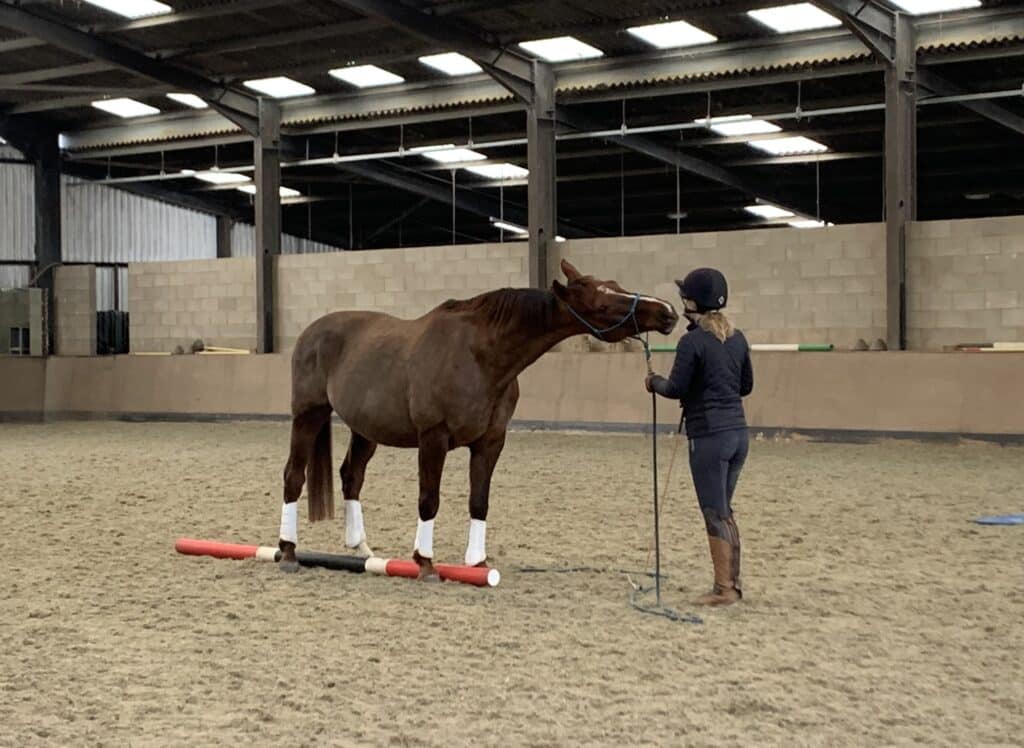Behaviour, Featured, News & Research, Training, Training and Management
Out and about with The Horse Hub – Groundwork: Building strong foundations with your horse
Chris Keate, talks us through an inspiring day of practical learning
Out and about with The Horse Hub, we had a very exciting time last weekend – on 11th March when we held our first event for horse owners. The Horse Hub collaborated with our sister company PKW Events (who provide CPD to equine professionals) and invited horse owners to a practical day – ‘Groundwork: Building strong foundations with your horse’. It sold out to a great bunch of people all looking to better understand and strengthen their relationships with their horses.
The morning sessions with Tracey Duncan with her lovely mare Tehen, and Miri Hackett with Boots, reminded us that how we are feeling always affects our horses and, that it is our job first and foremost, to turn up for them in a calm, positive way. We were reminded how readily our horses pick up on our energy and emotions, and before even beginning her session – the first of the day, Tracey asked the audience take some calming breaths – in for 3 out for 4 – to reduce the energy in the arena full of expectation, to help settle Tehen. (Tehen wears a UV mask as she is light sensitive).
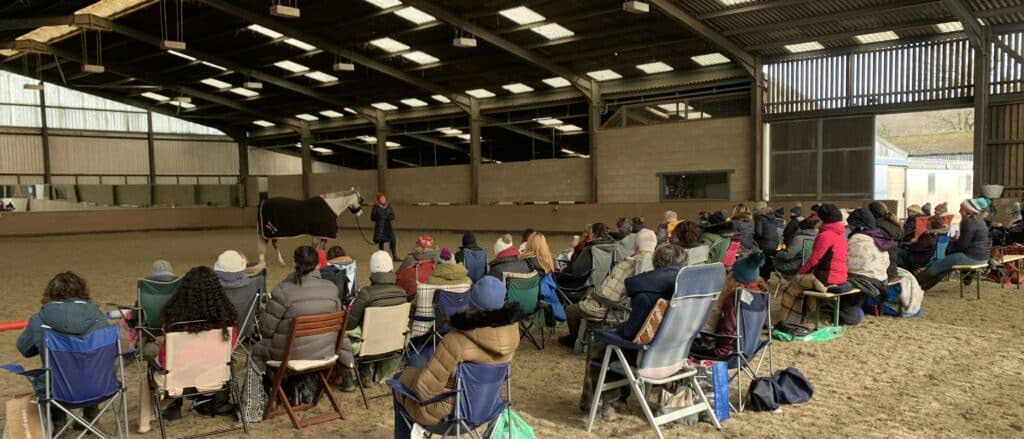
From both Miri and Tracey we learned about spotting signs of relaxation, from the more visible licking and chewing – ‘I’m listening and processing what you’re asking’, to watching their eyes and looking for the two blinks that say ‘now I’m relaxed’ and, always allowing the horse time to process a situation. Keeping training positive by asking the questions that set you both up for success – no matter how small the steps, learning should be a positive experience, don’t ask the questions that set you both up to fail. Relaxation should be at the centre of training with our horses, tension does not encourage good posture, nor does it allow for correct muscle development.
Watch Tracey and Tehen demonstrate liberty work
Building patterns that are familiar to our horses can help them relax in new and stressful situations a great example is the warm-up arena. A simple repeated movement that the horse knows and is comfortable performing at home, such as a figure 8 can help focus and reduce tension.
Understanding that the whip is never a source of pain nor punishment, Miri demonstrated how by conditioning its use as an extension of her arm, Boots would willingly move towards it.
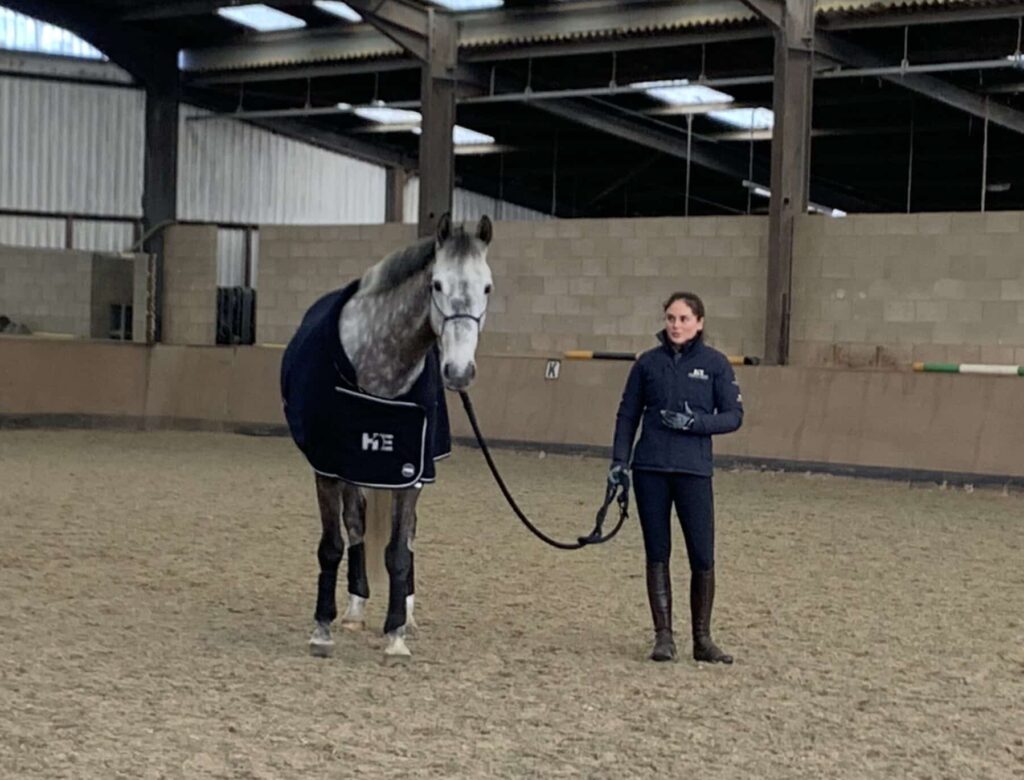
Air, hair, skin, muscle
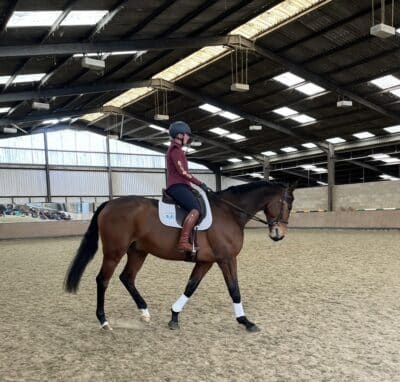 We hear about the scales of training but, in our only ridden demonstration Natasha Olivant talked about the scales of touch – air, hair, skin, muscle. And yes, we’ve all had times when we think we are going to canter, and our horse does or, anticipates transitions in a dressage test as we are thinking ahead to the next movement. Horses do pick up our signals and are sensitive enough to feel a fly on their skin so, our aim always, should be working towards using the lightest of aids.
We hear about the scales of training but, in our only ridden demonstration Natasha Olivant talked about the scales of touch – air, hair, skin, muscle. And yes, we’ve all had times when we think we are going to canter, and our horse does or, anticipates transitions in a dressage test as we are thinking ahead to the next movement. Horses do pick up our signals and are sensitive enough to feel a fly on their skin so, our aim always, should be working towards using the lightest of aids.
With a previously unknown to her, horse and rider Natasha demonstrated the influences of rider posture and seat bones, working on the halt with no rein aid.
She further demonstrated the scales of touch in a groundwork session with another ‘new to her’ horse. Quickly building a relationship with him, she showed us how with her posture and the lightest touch of a finger, he was able to show a side step across a pole – something he had never done before.
The day ended with Liz Eaton – a regular contributor to The Horse Hub with training features, along with Catherine and her wonderful horse Rolo – who seemed to be motivated by kisses as much as anything. He had the whole audience wrapped around his hoof from the moment he entered the arena. Under Liz’s guidance Catherine and Rolo demonstrated a series of exercises that at first look might have appeared as party tricks but. actually have a sound basis – improving proprioception and spatial awareness.
Standing on the pedestal for example, stretches the topline and engages the core, in a gentle way. Also, by observing whether the horse always choses to ‘step up’ with say the left foreleg, we can tell if they have a stronger side and, could then encourage the use of the right fore.
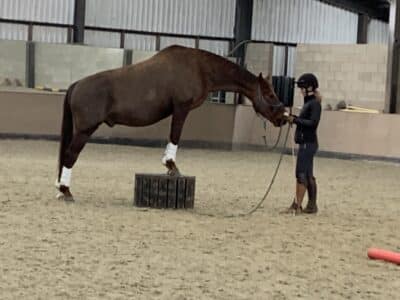 Side stepping over a barrel it was explained, helps the horse understand spatial awareness – every horse has a finite number of ‘jumps’ it can perform in its lifetime, and the horse that clears the fence by just enough, will put less strain on its body –joints and tendons – so have greater longevity, than the horse that clears every fence with ‘air to spare’.
Side stepping over a barrel it was explained, helps the horse understand spatial awareness – every horse has a finite number of ‘jumps’ it can perform in its lifetime, and the horse that clears the fence by just enough, will put less strain on its body –joints and tendons – so have greater longevity, than the horse that clears every fence with ‘air to spare’.
In all the feedback from the day speaks for itself check out our Facebook page and, it was fantastic to meet so many horse owners all looking to better understand their horses and how to work with them.
